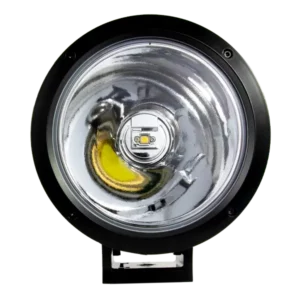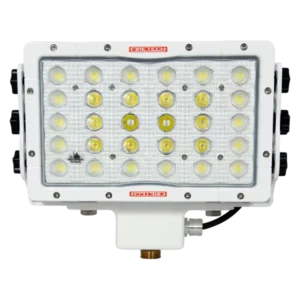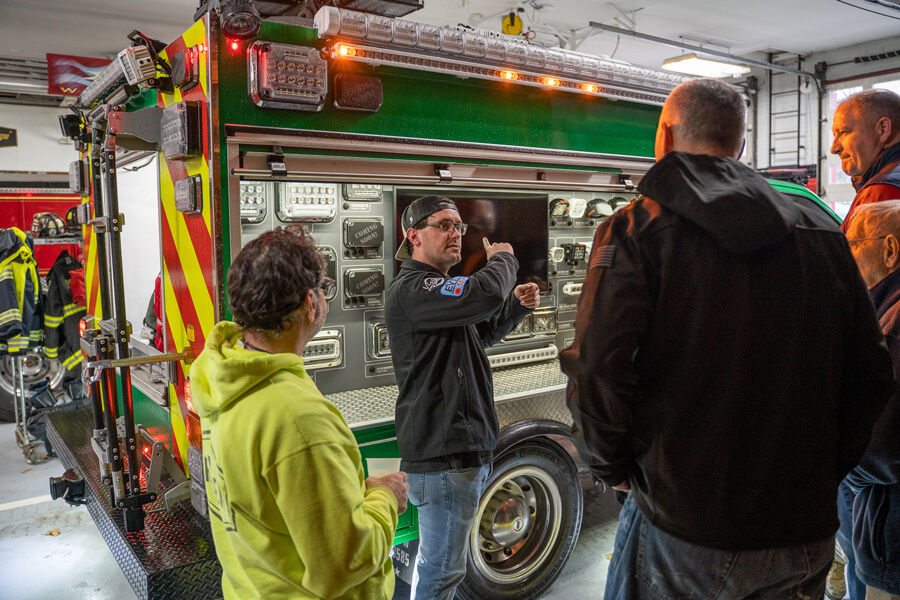LED
LED lighting is the most advanced technology on the market today, and offers maximum visibility and safety around your apparatus. LED lights do not use a bulb, and without any moving or glass parts, are designed to operate maintenance free for the life of your apparatus.
INTENSITY
AMP DRAW
LUMENS PER WATT
HID
HID lights require a bulb, starter and ballast to operate. They have a higher output per watt than halogen bulbs, but take time to warm up and reach their full brightness. HID lights are also prone to excessive electrical noise, which can interfere with communication systems.
INTENSITY
AMP DRAW
LUMENS PER WATT
HALOGEN
Tungsten-halogen bulbs use an oversized globe and specially engineered filament to enhance light output. Halogen bulbs are by far the least efficient and often provide the least amount of light when compared to LED and HID options.
INTENSITY
AMP DRAW
LUMENS PER WATT
THE HIVIZ DIFFERENCE
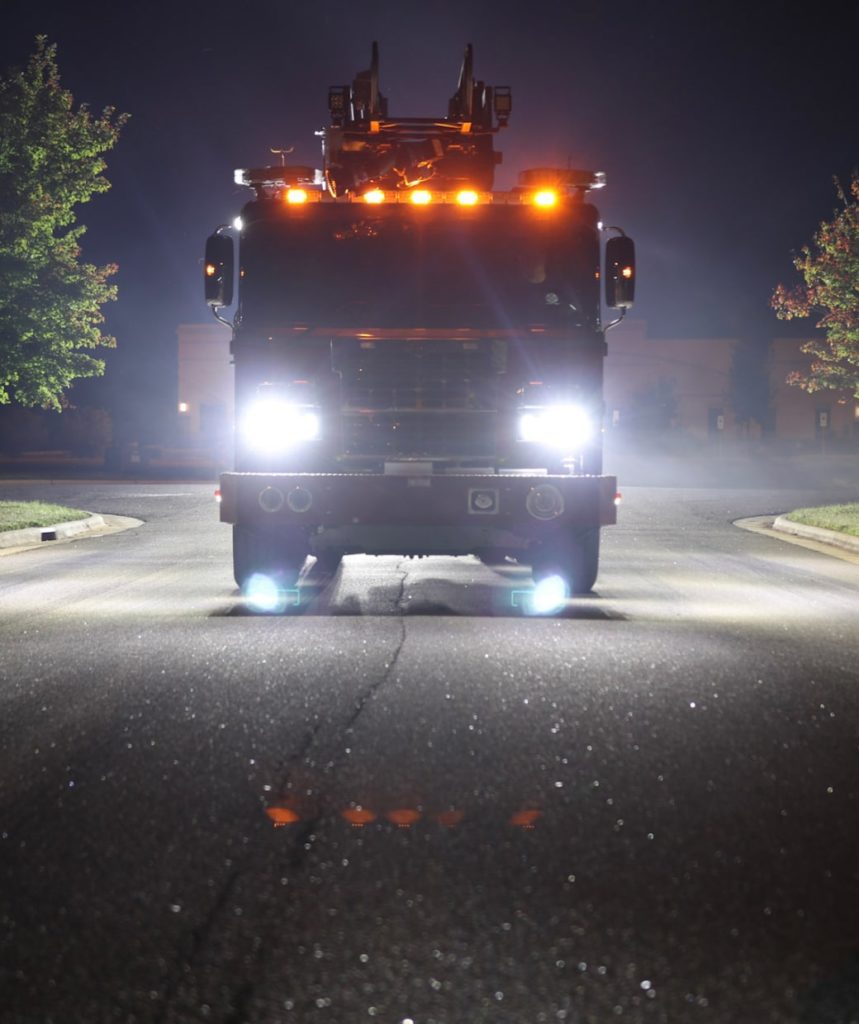
Top Binning
Not all LEDs are created equal. Each run of any given model of LEDs by the manufacturer is binned to classify the quality within that batch. HiViz uses only top binned LEDs to ensure the highest quality.
Pulse Width Modulation
When enabled, Pulse Width Modulation integrated circuitry flashes the LED faster than the human eye can see for reduced heat, prolonged LED life and providing dimming capabilities
High Efficiency
HiViz products are engineered for the highest possible luminous efficacy – the ratio of lumens per watt. Our fixtures consume up to 2/3 less power than others in similar output ranges.
Electronic Thermal Management
The most important factor in determining service life and performance of an LED fixture is the operating temperature of the circuit. Integrated Electronic Thermal Management automatically regulates heat levels by engaging ETM to prolong each LEDs lifespan to 50,000+ hours.
MEASURING LIGHT OUTPUT
USABLE LIGHT = LUX / F.C.
Lumens is the measurement of light at the source. Lux (or Foot Candles) is the measurement of light on a specific target. Analogous to fire fighting, Lumens is GPM/Flow, Lux is where the water droplets land. Changing from fog to straight stream does not effect the flow rate, it just effects where the water lands. Similarly, Lumens at the source does not tell you how much light is where you’re working, just how much light is produced. Temperature of circuit is analogous to Friction loss.
In general, adequate work lighting levels in the Fire/Rescue/EMS industry is defined as somewhere between 3 and 10 lux on target. At one lux, you generally have enough light to read a newspaper.
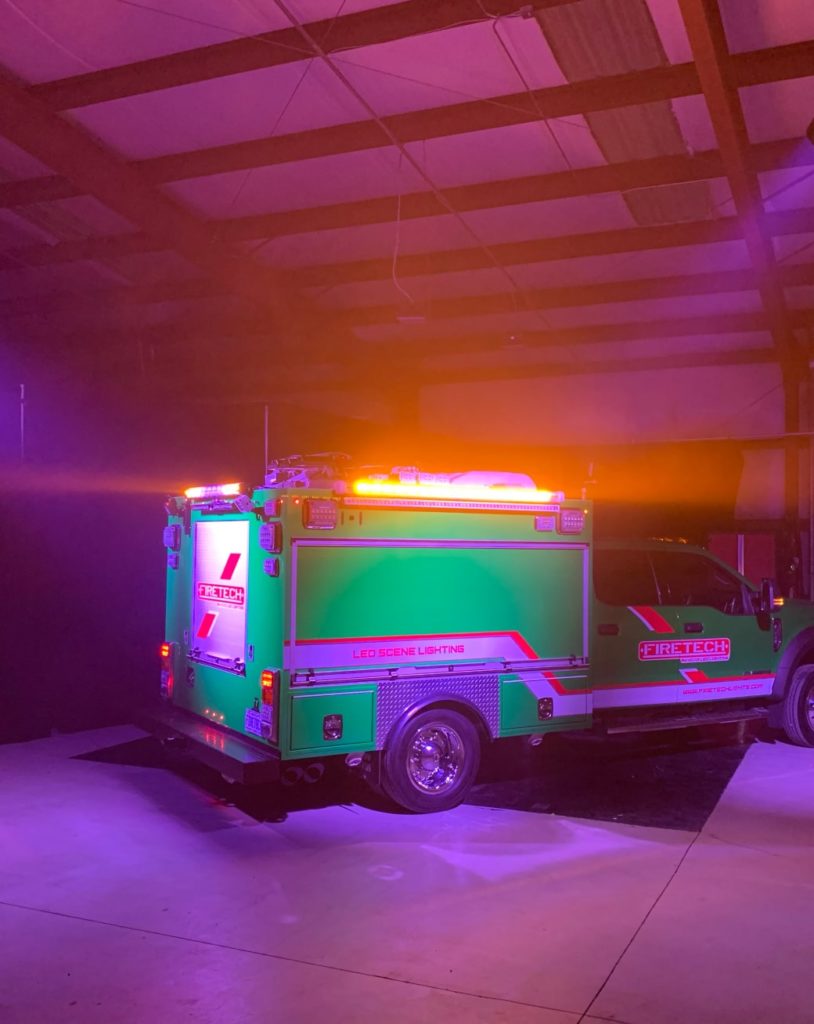
RAW LUMENS
Lumens are a common standard for measuring light output at the source. It is important to know that the LED chip manufacturer rating is only for the light source in a perfect world, at a perfect temperature and does not account for losses due to optical inefficiencies, electrical inefficiencies or heat.
EFFECTIVE LUMENS
The sum of the rated output of the LED chips is not enough to capture the whole story. When measuring effective output, the amount of light lost as heat, or in scattering through the optics, and to electrical inefficiency must also be accounted for. Effective Light Output is measured in a machine called a Goniophotometer, and allows comparisons between fixtures using reproducible scientific “IES” data. This is the ONLY fair way to compare lights from one manufacturer to another. We’re always happy to provide Photometric Isolux reports on any product upon request.


